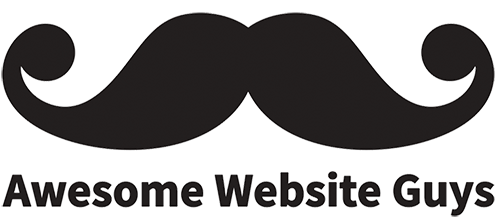Short for robot, the term bot refers to a software program designed to do specific, automated tasks. Bots are used for a variety of reasons, but all have a common purpose – they help people save time, money, and reduce errors. Like any technology, bots can be used for good or bad purposes. Thus, it’s important to understand what a bot is, the different types of bots out there, and how to keep your website safe from bots designed to do harm.
What is a Bot?
Bots describe any software program built to complete specific tasks, particularly ones that are repetitive or take a long time for humans to do. Like other technology, humans must program bots in order for them to be functional and carry out their jobs. Depending on the bot’s job and job’s complexity, this can be a quick or challenging program to build.
Types of Bots
There are a variety of bots, both good and harmful ones. Check out some of the most common good bots available in today’s digital landscape.
- Chatbots: This type of bot is programmed to communicate with people using artificial intelligence. Chatbots can answer questions or carry out specific tasks, which can help a company save time and provide 24/7 support for their customers. Examples of this bot include Slack, Facebook Messenger, and Amazon’s Alexa.
- Backlink Checker Bots: This bot crawls websites and looks for inbound links to identify where a site’s traffic is coming from. SEO specialists use this bot’s findings to continue to boost site traffic and SEO rankings.
- Copyright Bots: To address copyright infringement issues, this bot scans the web for any content that has been stolen, including music, videos, images, and text. Big companies like YouTube use these bots to report and disable video content that violates any copyright laws.
- Feed Fetcher Bots: This bot specializes in gathering and sending real-time information to subscriber lists for sites, such as blogs and news outlets.
- Monitoring Bots: To keep your site running smoothly, monitoring bots can identify when site visitors have issues on your site, such as slow loading speeds or CTA (Call-to-action) buttons not working.
- Search Engine Bots: Search engines use this bot to crawl web pages. This bot processes and evaluates a web page’s content to determine how relevant and useful it is. The bot’s findings help search engines rank a page’s SERP (search engine results page) ranking.
- Shop Bots: When it comes to saving money, this is a great bot. Shop bots scour the Internet for the best price and deals for a specific item. This way, you don’t have to spend hours trying to find the best price. How awesome is that?
- Social Network Bots: Social networks like Facebook and Twitter use bots to run user data through algorithms, which helps you receive personalized social content based on your user behavior. This explains how you receive relevant content on your social news feeds.
- Trader Bots: These bots specialize in collecting pricing information for online retailers. Online giants, such as Amazon use trader bots to monitor their competition and adjust their product price and deals based on the bot’s findings.
- Web Crawlers: Web crawlers are a type of bot programmed to scan content on the Internet.
Now that we’ve discussed the good bots, let’s take a look at the harmful bots:
- Click Bots: This bot is programmed to visit sites and excessively click on online ads. This causes the ad campaign data to be altered, and it drives up an advertiser’s budget. If online ads are on a CPC (Cost Per Click) basis, click bots can exhaust your ad budget.
- File-Sharing Bots: This bot is built to post files that are infected with malware to peer-to-peer file sharing software, such as Dropbox or Box.com. When users download the malicious file, they unknowingly just installed malware on their device.
- Impersonator Bots: As the name suggests, the bot is designed to disguise itself as a human user, to get past site security measures. As technology improves, bots are getting better at breaking into websites, such as injecting CAPTCHA codes that bypass security obstacles.
- Spam Bots: This bot is designed to post spam in comment sections, lead forms, and email inboxes. Common types of spam include unsolicited messages and ad links. Spam bots can also be designed to collect personal information that users submit via forms, such as their email addresses, phone numbers, and even passwords.
- Scraper Bots: Scraper bots are built to steal high-quality, optimized content from other websites. Ad fraud criminals use this stolen content to help create authentic looking websites, so they can sell ad space and boost their site traffic.
- Spy Bots: This malicious bot is tasked with stealing personal information from a website, company, or person. Spy bots do this by logging keystrokes or interrupting packets. Hackers can then sell the stolen information to third parties.
- Transfer Bots: Transfer bots are programmed to cause forced redirects by attaching themselves to trustworthy sites and waiting for site visitors to click through. Rather than sending visitors to the intended site, this bot redirects them to a different site.
- Botnets: Also called zombie bots, botnets allow hackers to take control of a user’s computer without their knowledge. DDoS attacks are a common type of cyber attack typically caused by botnets.
Keep Your Site Safe from Malicious Bots
As you can see, there are a mixture of both good and harmful bots. When used appropriately, bots can increase work efficiency, save money, and decrease the likelihood for errors. However, when used inappropriately, bots can cause significant harm to a company, website, and even person. How do you keep your site safe from these malicious bots? Along with security best practices, it’s recommended that you use a bot management solution. Bot managers identify and stop malicious bots from harming your site and its users, as well as allow good bots to do their jobs without interference.
We hope you enjoyed this week’s article and learned something new about the diverse range of bots available online. If you are looking for an affordable website solution for your business, look no further than Awesome Website Guys.
Valerie Hare
Valerie is a Content Strategist at Awesome Website Guys. She has a background in web development and writing. When not working, she enjoys going to the beach, walking her dog, and chilling with her family.

